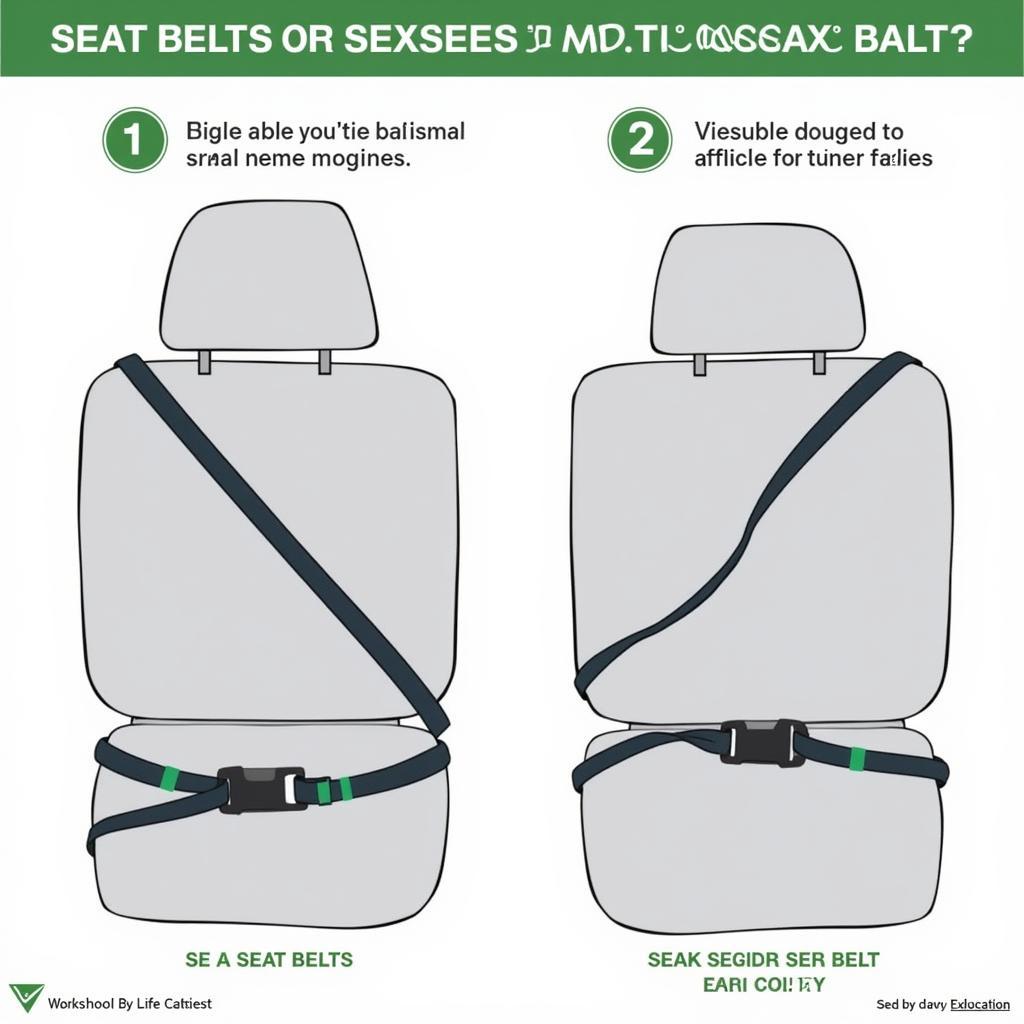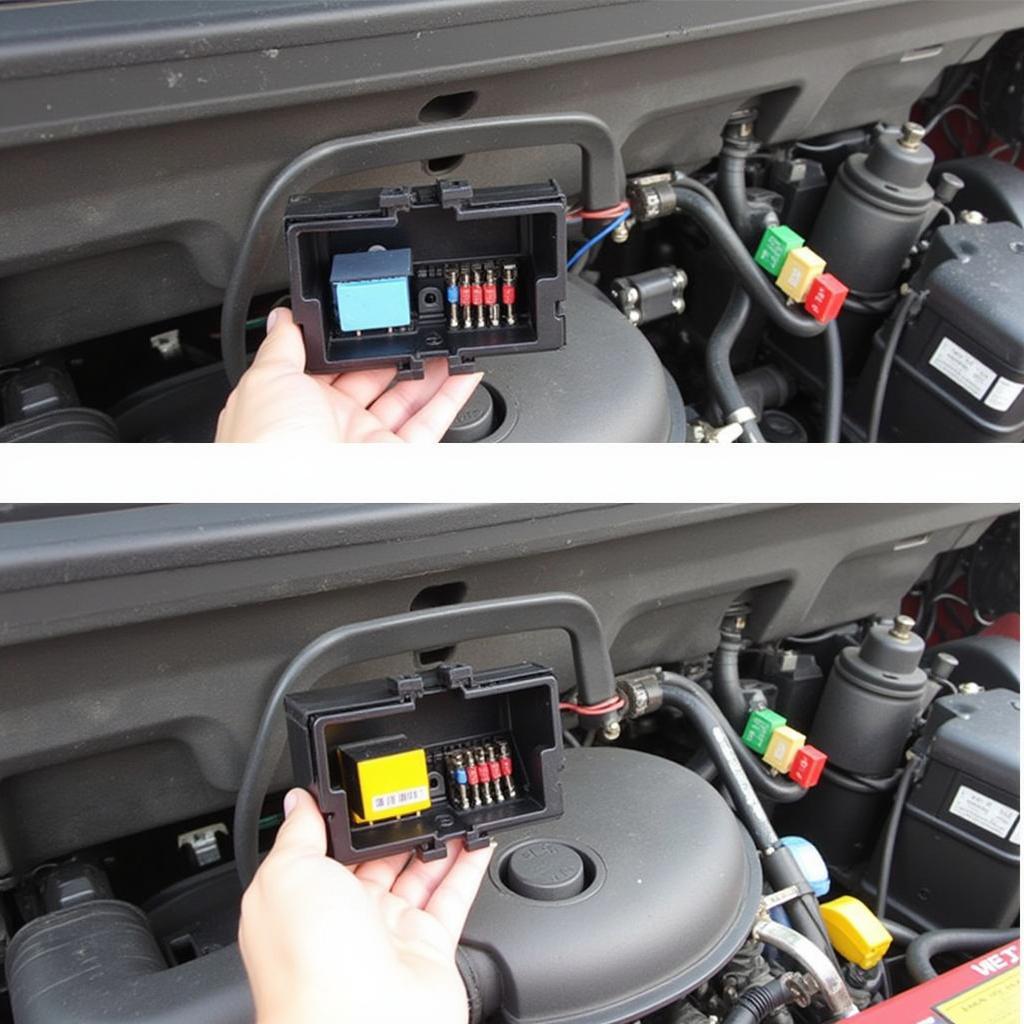The seat belt warning chime in your 2014 Toyota Camry is a crucial safety feature, reminding you and your passengers to buckle up. However, there might be instances where you need to adjust its settings or troubleshoot potential issues. This comprehensive guide will delve into the intricacies of the 2014 Camry’s seat belt warning system and provide step-by-step instructions on how to turn the chime on.
![]() 2014 Camry dashboard with illuminated seatbelt icon
2014 Camry dashboard with illuminated seatbelt icon
Understanding Your Camry’s Seat Belt Warning System
Before we dive into the “how-to,” it’s essential to grasp the fundamentals of your Camry’s seat belt warning system. This system comprises sensors in the driver and passenger seats that detect the presence of occupants and whether the seat belts are fastened. Upon starting the vehicle or when a seat belt is unbuckled while driving, the system triggers an audible chime and a visual warning, typically an illuminated seat belt icon on the dashboard, to alert the driver.
The 2014 Camry, like many modern vehicles, prioritizes safety. The seat belt warning system is designed to be active by default, ensuring the well-being of you and your passengers.
Turning On the Seat Belt Warning Chime: A Step-by-Step Guide
While the seat belt warning chime is generally active by default, there might be scenarios where it’s been inadvertently deactivated, or you suspect a malfunction. Here’s a detailed guide on how to ensure the chime is turned on:
- Check Your Owner’s Manual: Your Camry’s owner’s manual is your go-to resource for all things related to your vehicle, including specific instructions on the seat belt warning system.
- Inspect the Dashboard: Look for the seat belt warning icon on your dashboard. When you start your Camry, this icon should illuminate briefly as part of a system check. If it doesn’t, it might indicate a bulb issue or a potential problem with the warning system.
- Listen for the Chime: Pay close attention when you start your car and when the seat belts are unfastened while the engine is running. The audible chime should sound clearly.
- Test the Seat Belt Sensors: Gently sit in the driver and passenger seats without fastening your seat belt. The warning chime and dashboard icon should activate. If not, there might be an issue with the sensors.
Troubleshooting Seat Belt Warning System Issues
If, after following the steps above, you’re still experiencing problems with your seat belt warning chime, consider these troubleshooting tips:
- Check the Fuse Box: Refer to your owner’s manual to locate the fuse box and identify the fuse associated with the seat belt warning system. A blown fuse might be the culprit and can be easily replaced.
- Inspect Wiring and Connectors: While this requires some technical expertise, visually inspecting the wiring and connectors related to the seat belt sensors and warning chime for any loose connections or damage can be helpful.
- Seek Professional Assistance: If the issue persists, it’s best to consult a qualified mechanic specializing in Toyota vehicles. They can diagnose the problem accurately and perform any necessary repairs.
 Close-up of a fastened seat belt in a 2014 Camry
Close-up of a fastened seat belt in a 2014 Camry
“Remember,” says John Davis, a seasoned automotive electrician specializing in Toyota vehicles, “the seat belt warning system is a critical safety feature, not an annoyance. Ensure it’s functioning correctly to keep yourself and your passengers safe.”
Beyond the Basics: Advanced Seat Belt Safety Features in the 2014 Camry
The 2014 Camry might also come equipped with additional advanced seat belt safety features such as:
- Seat Belt Pretensioners: These devices automatically tighten the seat belts in the event of a collision to reduce slack and minimize potential injuries.
- Force Limiters: These work in conjunction with pretensioners to regulate the amount of force exerted on the occupant by the seat belt during a crash.
Familiarizing yourself with these advanced features can further enhance your understanding of your Camry’s comprehensive safety systems.
Conclusion
The seat belt warning chime in your 2014 Toyota Camry plays a vital role in promoting safety. By understanding how to turn it on, troubleshoot potential issues, and familiarize yourself with its advanced features, you contribute significantly to a safer driving experience for yourself and your passengers. Remember, buckling up every time is a simple yet crucial step towards ensuring everyone’s well-being on the road.
Frequently Asked Questions (FAQs)
1. Can I temporarily disable the seat belt warning chime in my 2014 Camry?
The 2014 Camry generally doesn’t allow for the permanent or temporary disabling of the seat belt warning chime. This is a safety feature designed to remain active at all times.
2. Why is my seat belt warning chime constantly going off even when I’m buckled?
This could indicate a faulty seat belt sensor. It’s best to have it inspected and potentially replaced by a qualified mechanic.
 Open fuse box in the engine bay of a 2014 Toyota Camry
Open fuse box in the engine bay of a 2014 Toyota Camry
3. Are there any aftermarket options to adjust the volume or tone of the seat belt warning chime?
Modifying safety features with aftermarket products is generally not recommended. It’s always best to consult with a qualified mechanic and prioritize maintaining the integrity of your vehicle’s safety systems.
4. Does the passenger seat have a weight sensor for the seat belt warning?
Yes, the 2014 Camry typically has a sensor in the passenger seat to detect the presence of an occupant and activate the warning system if the seat belt is unfastened.
5. Can I turn off the seat belt warning light on my 2014 Camry?
The seat belt warning light is an integral part of the safety system and cannot be manually disabled. It’s designed to alert you to a potentially unsafe situation.


